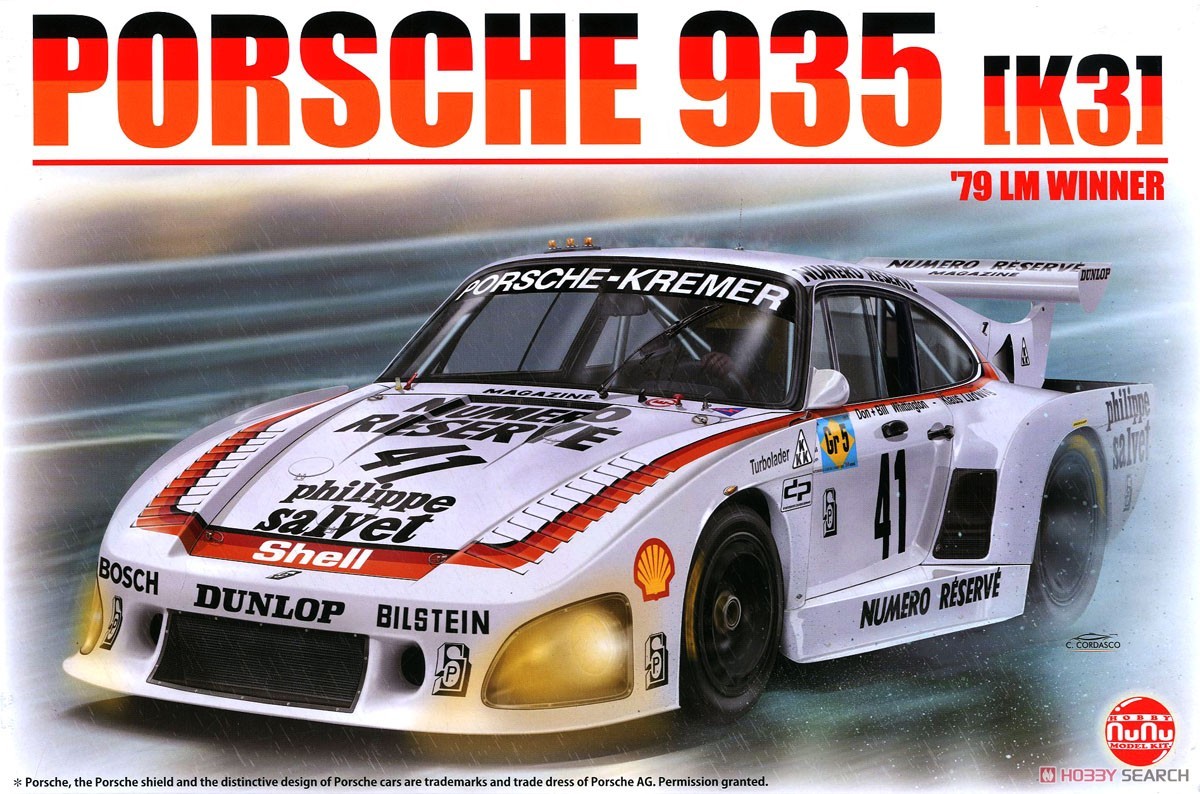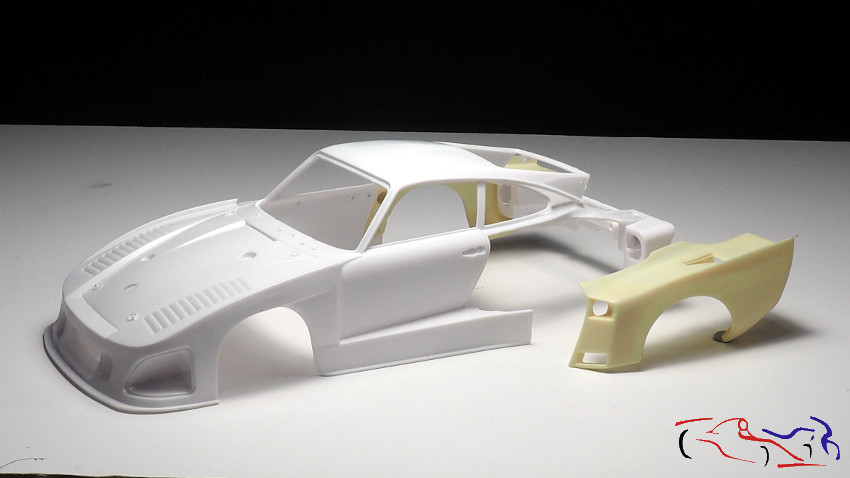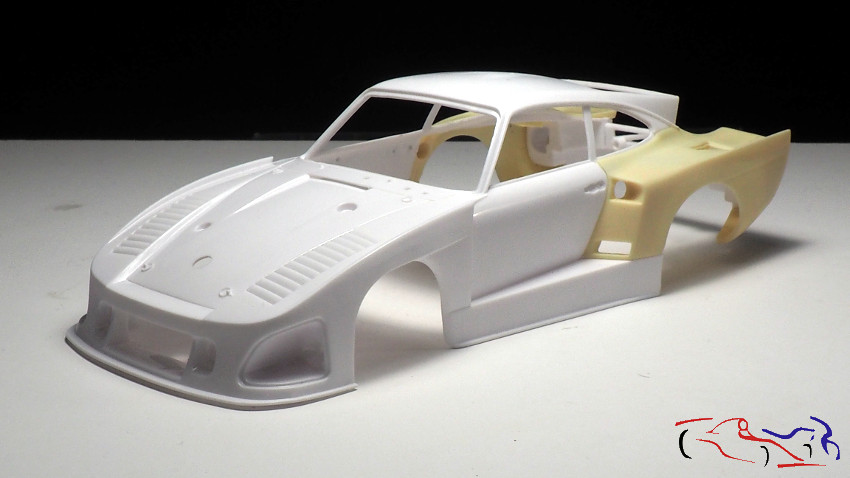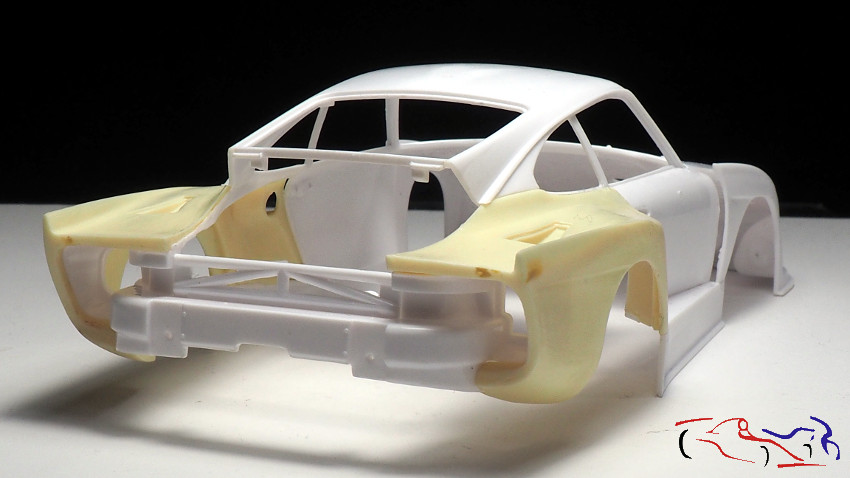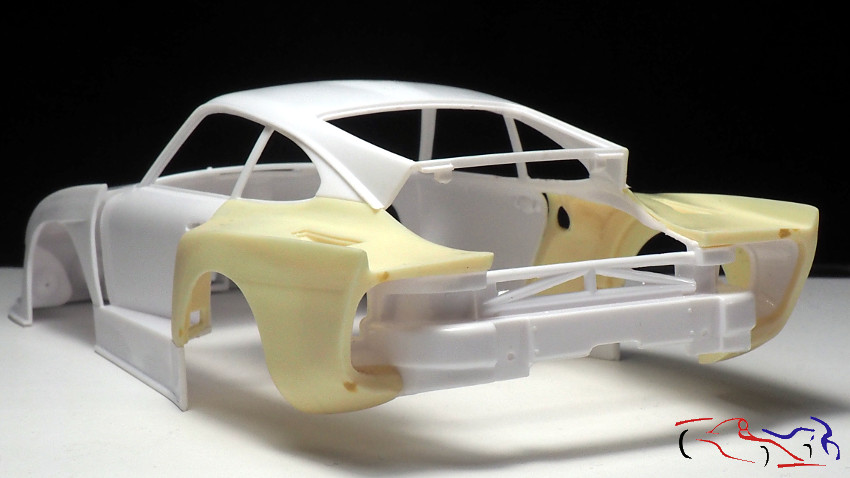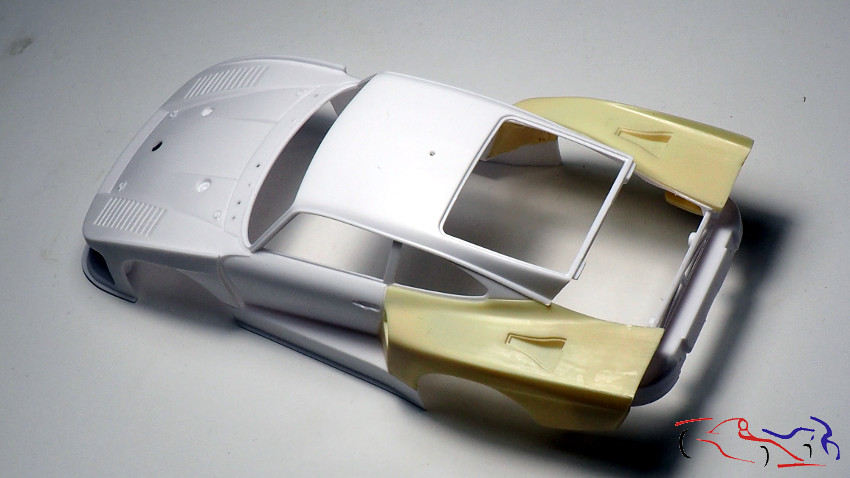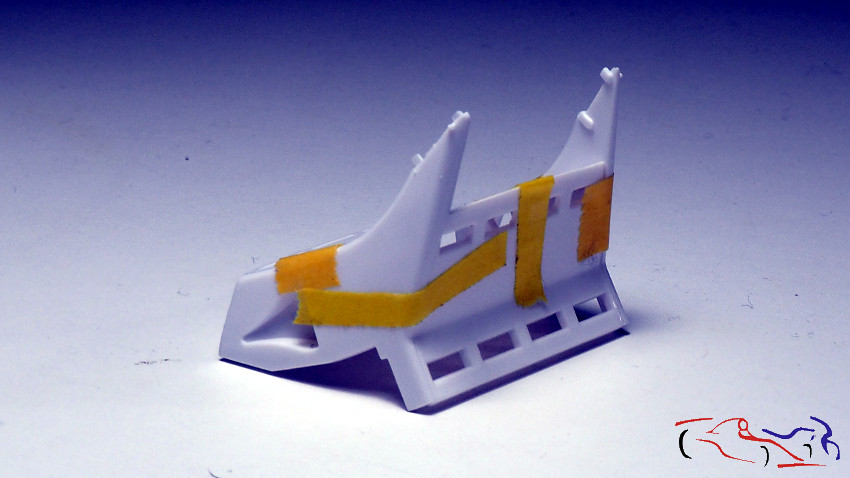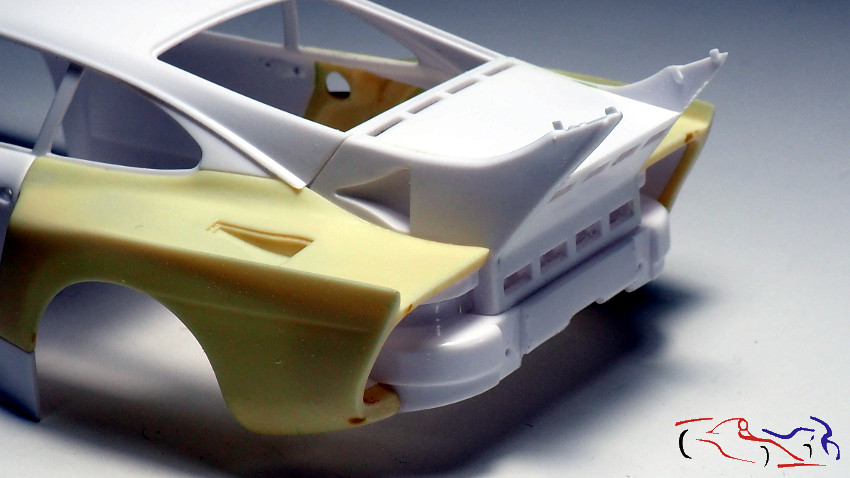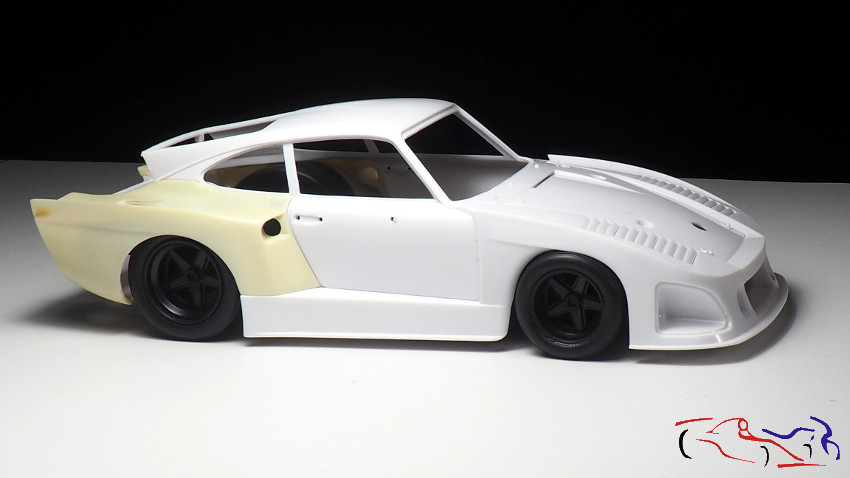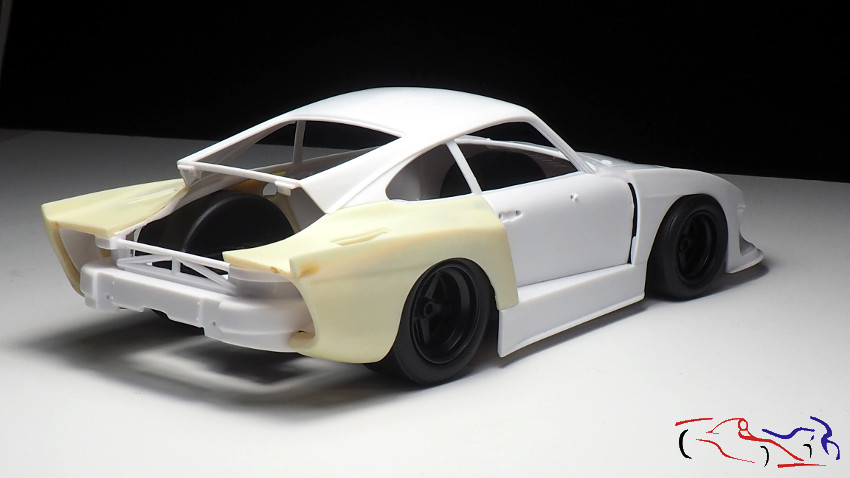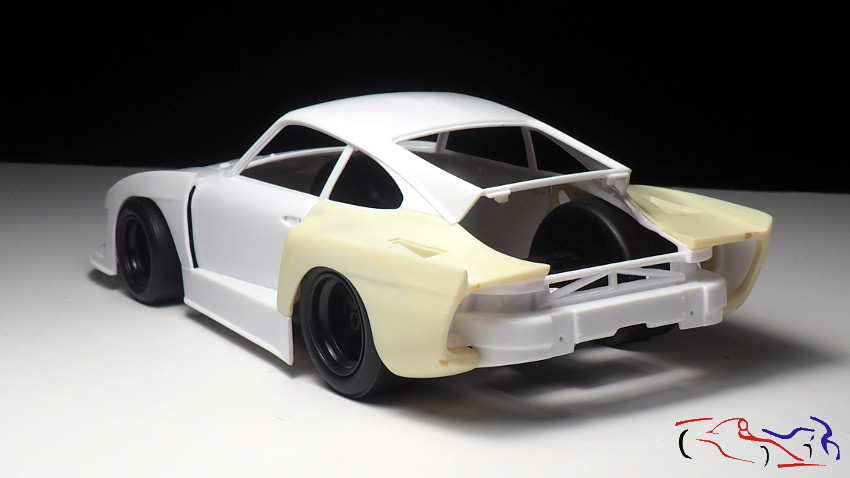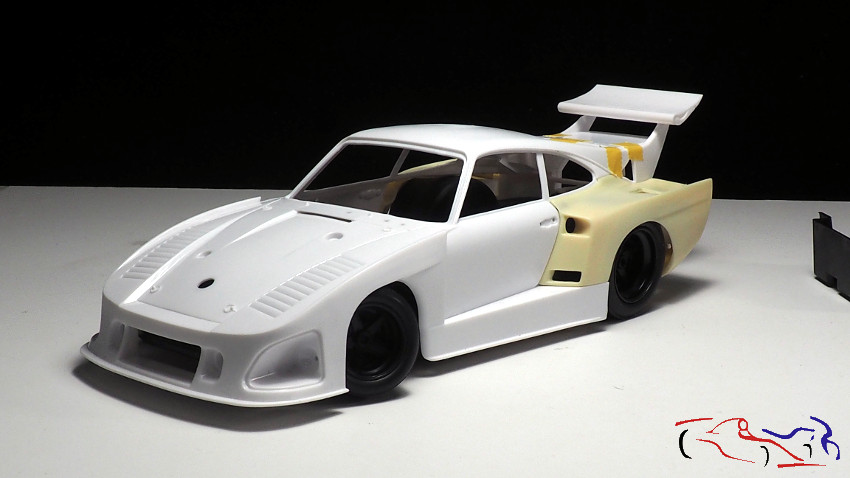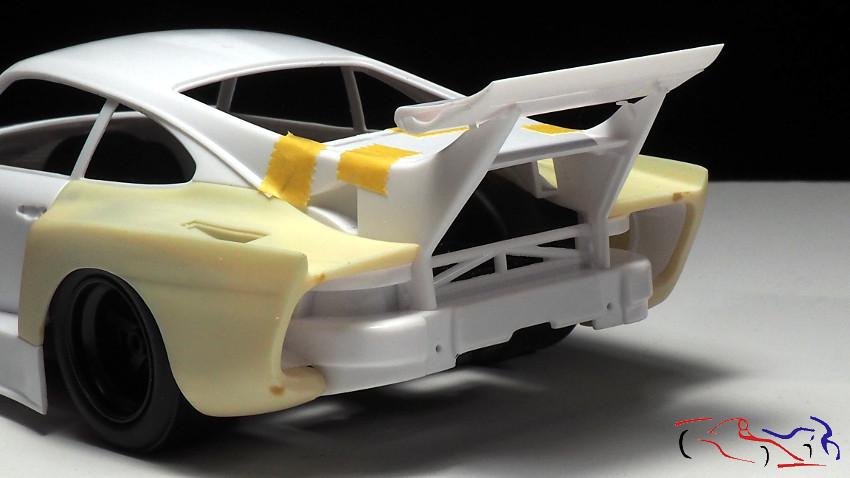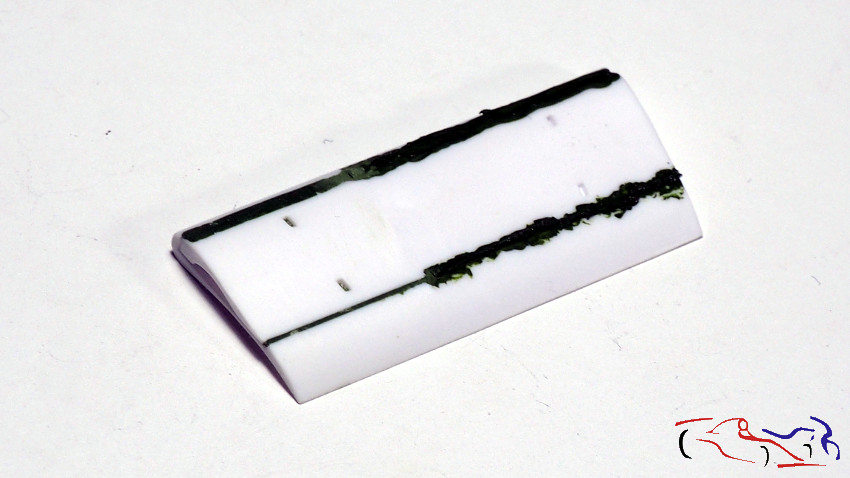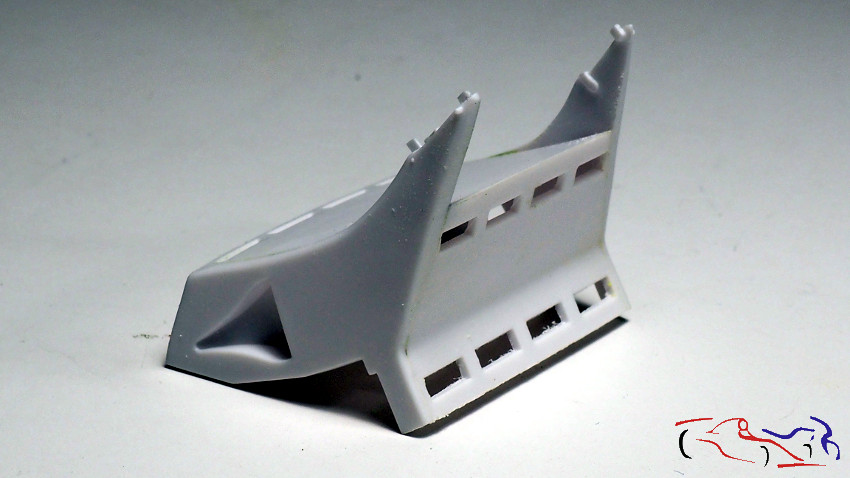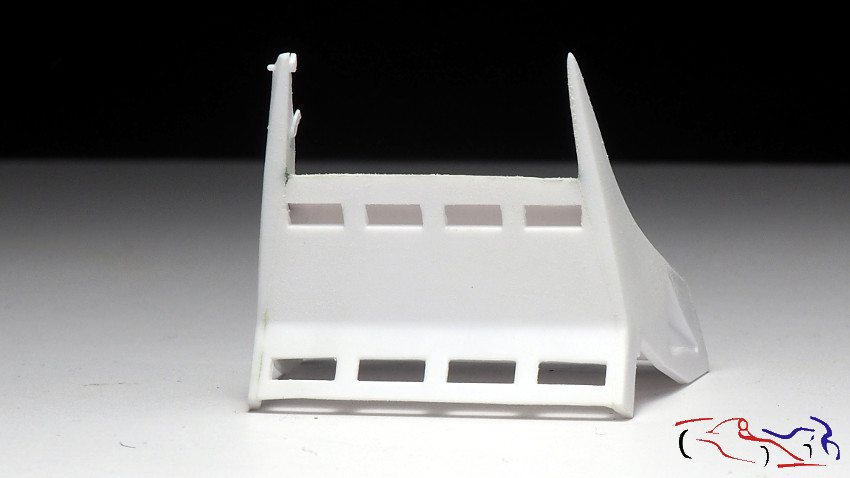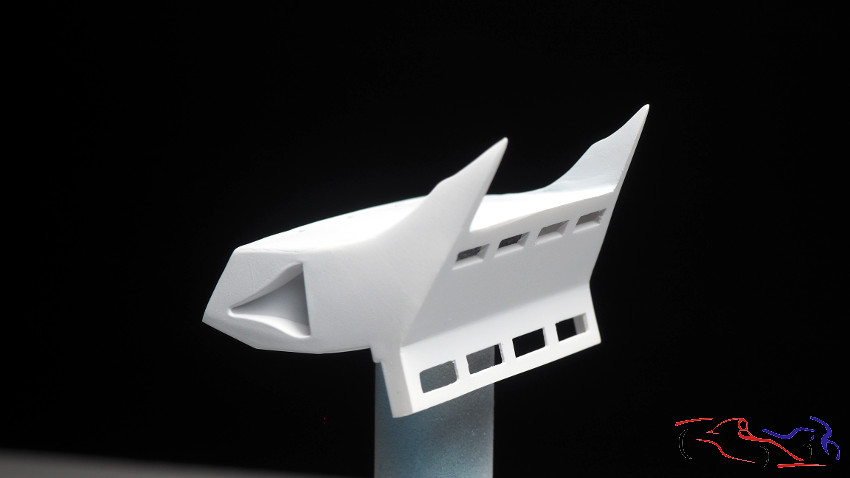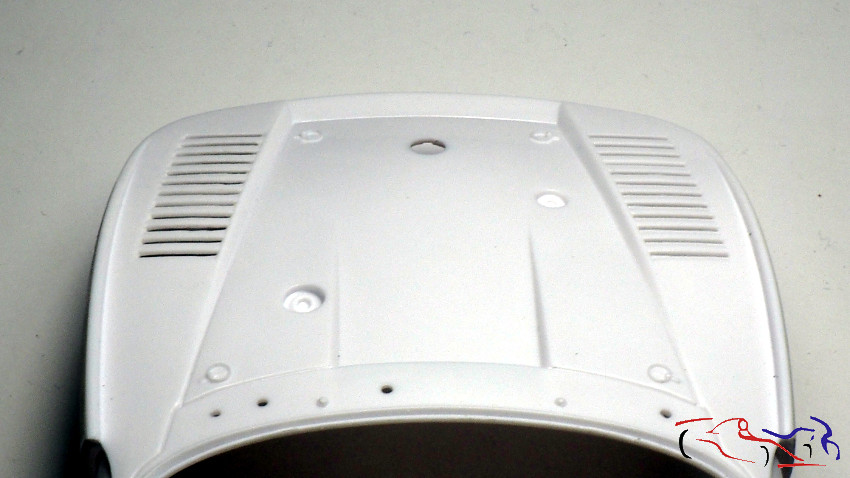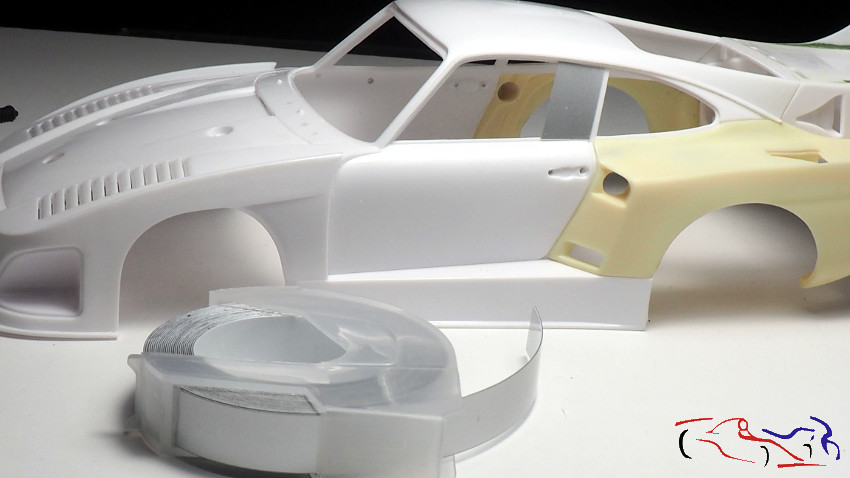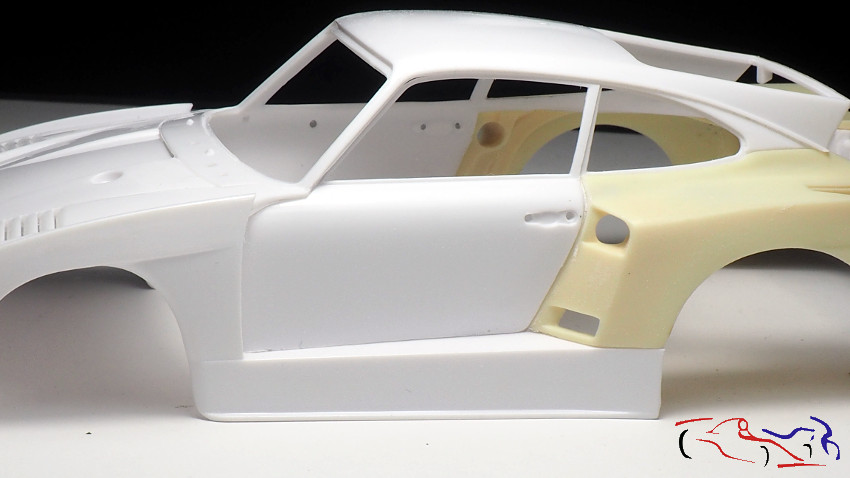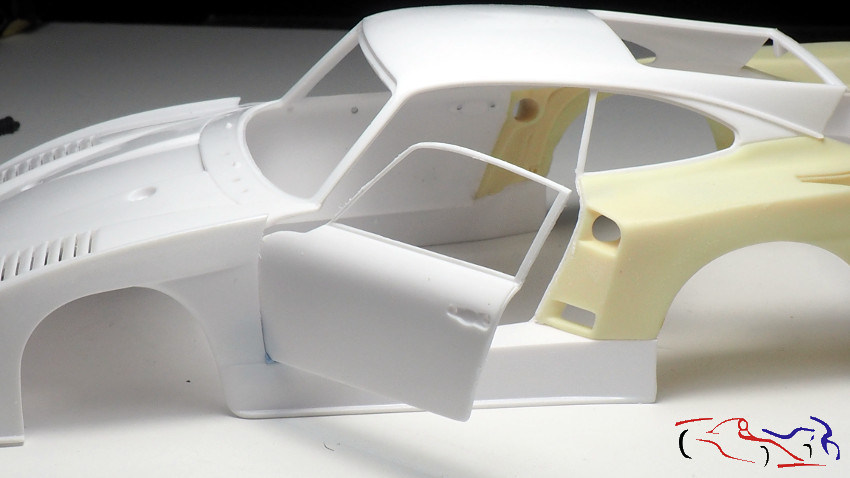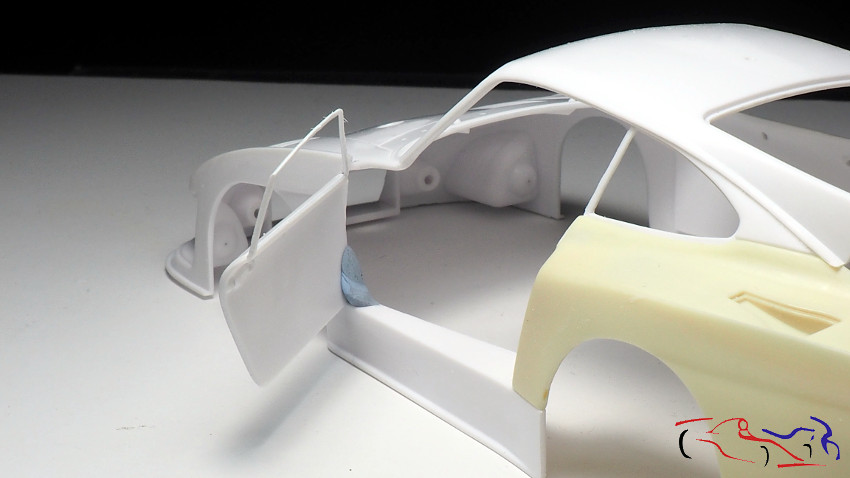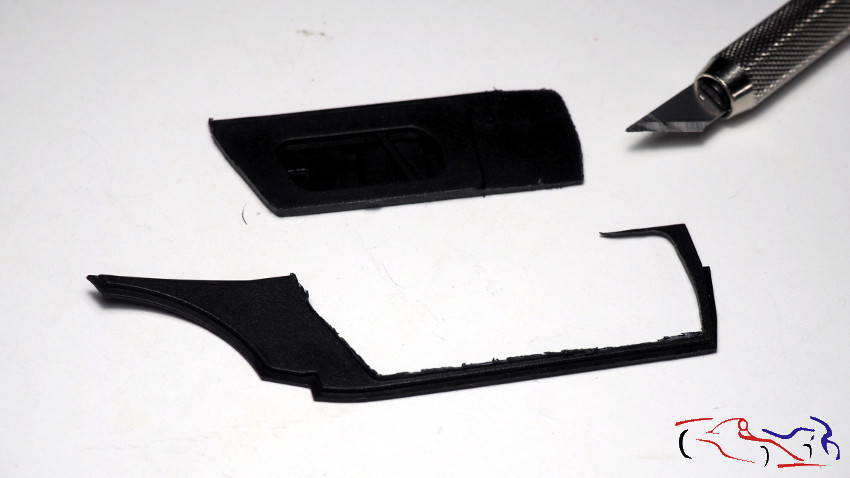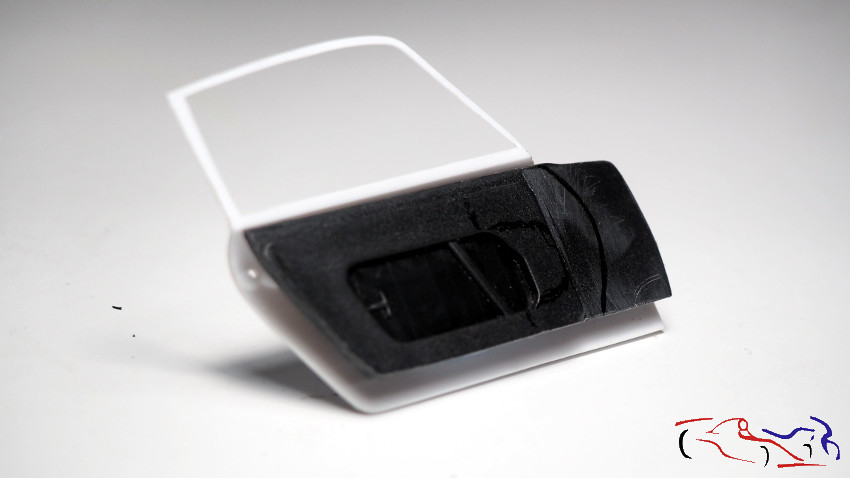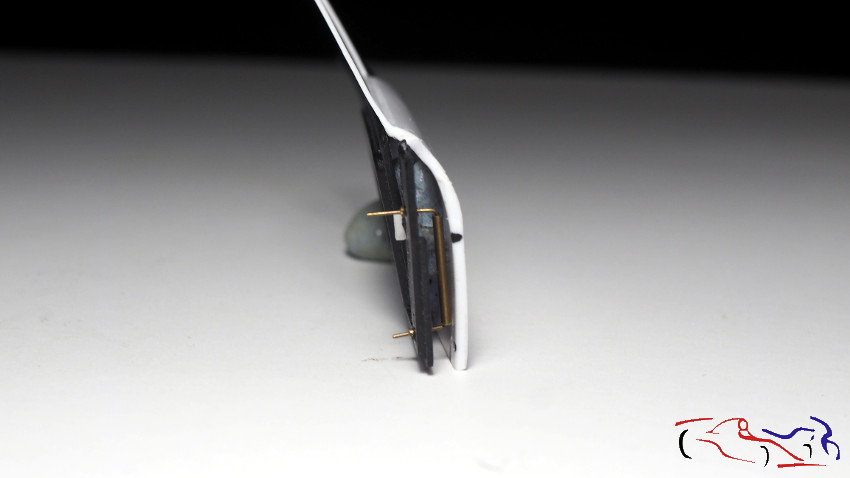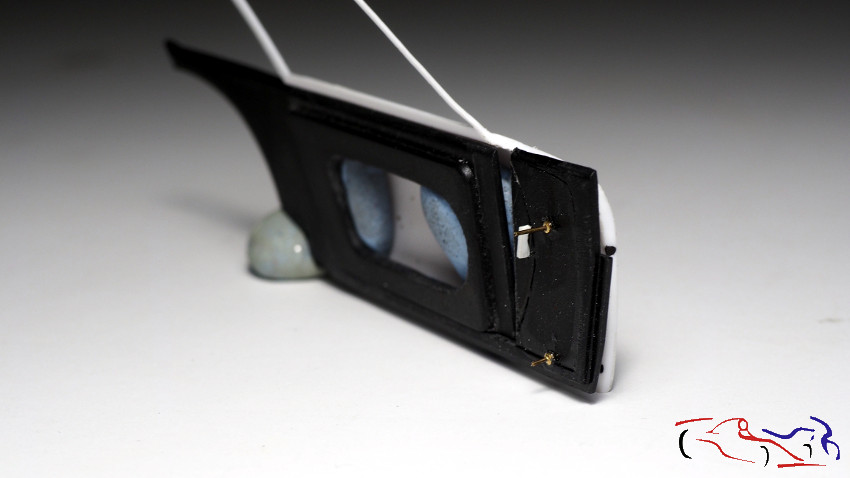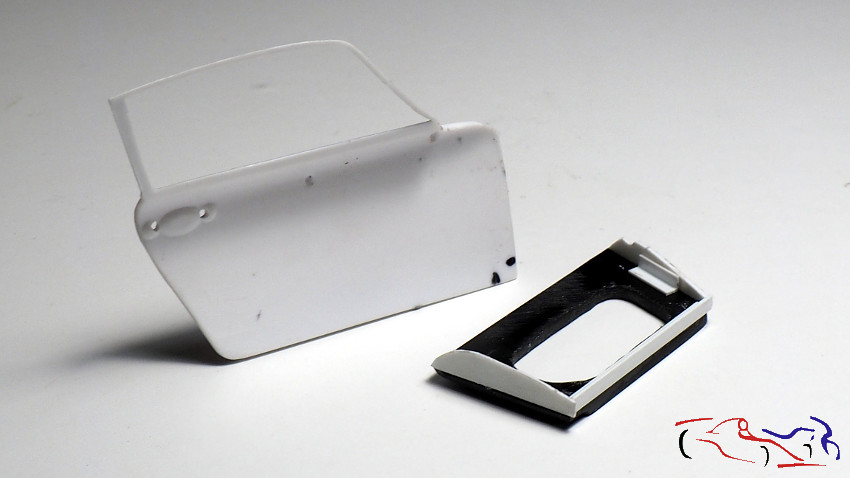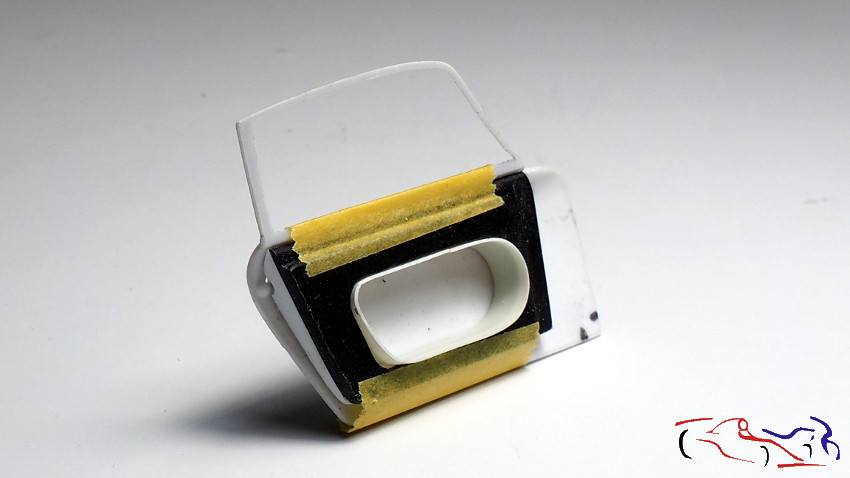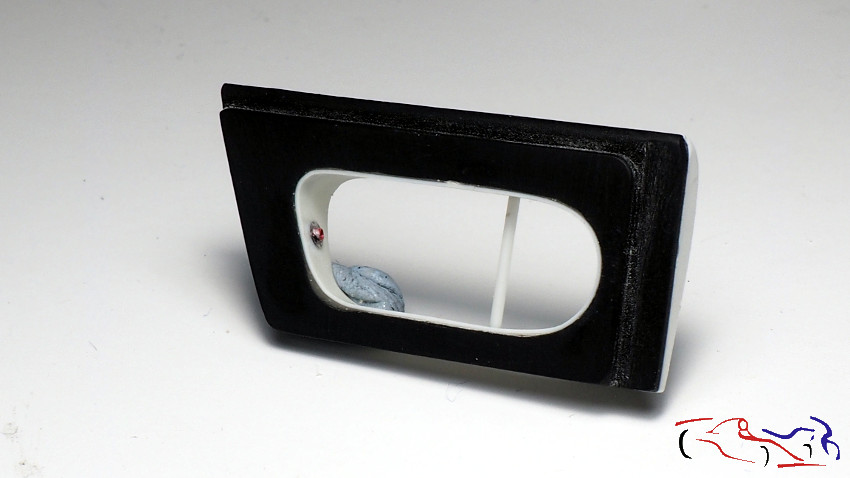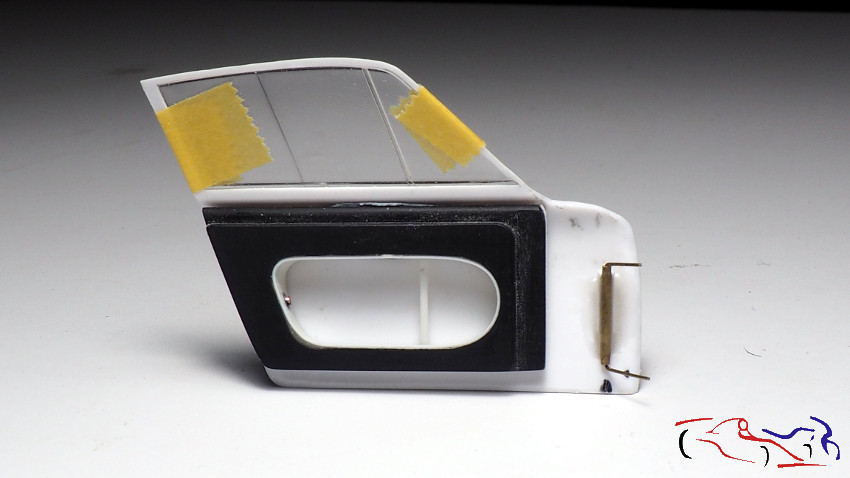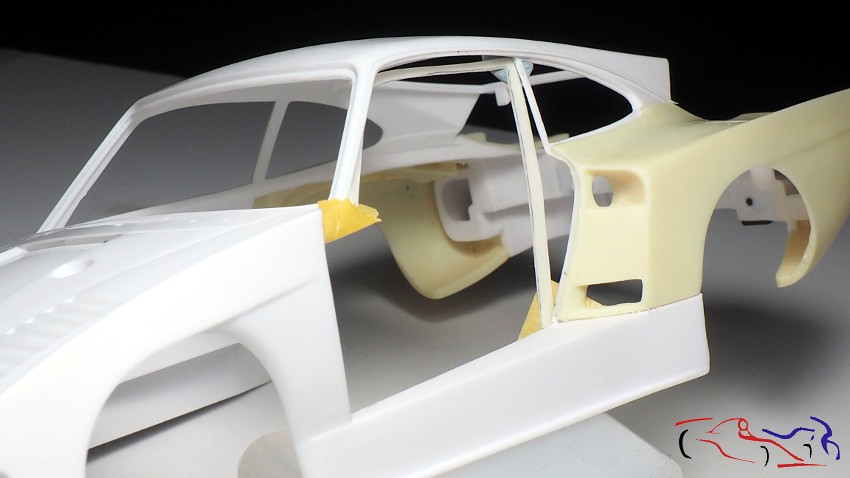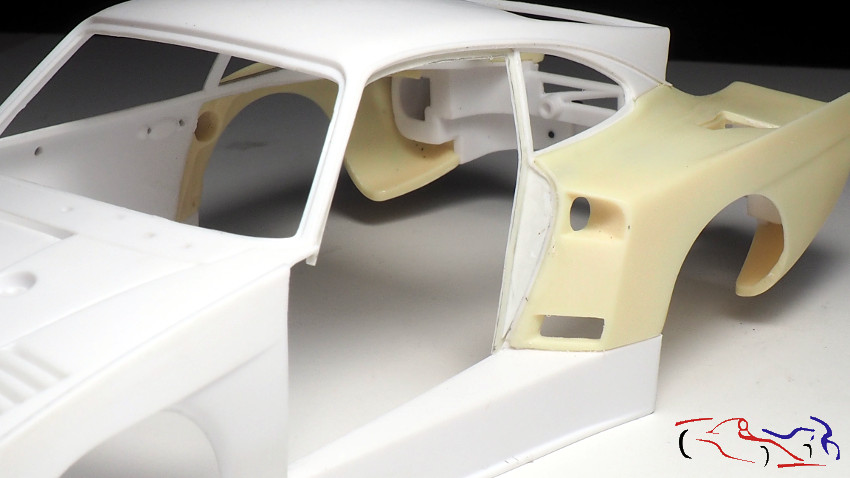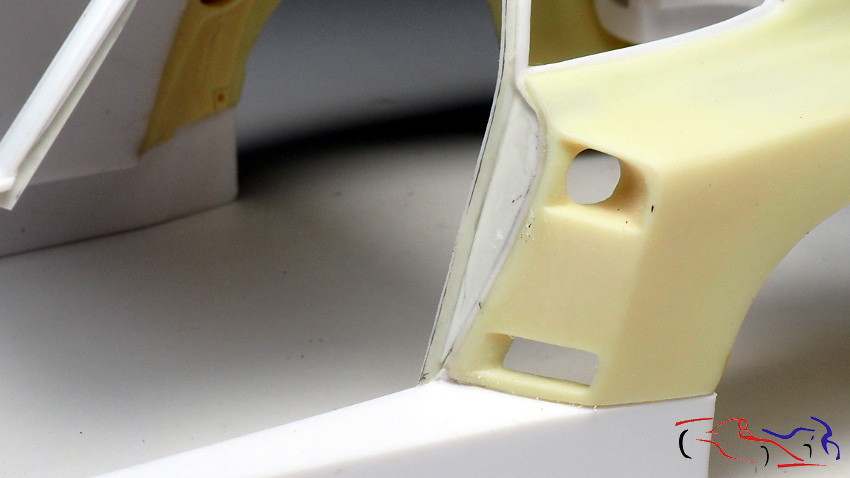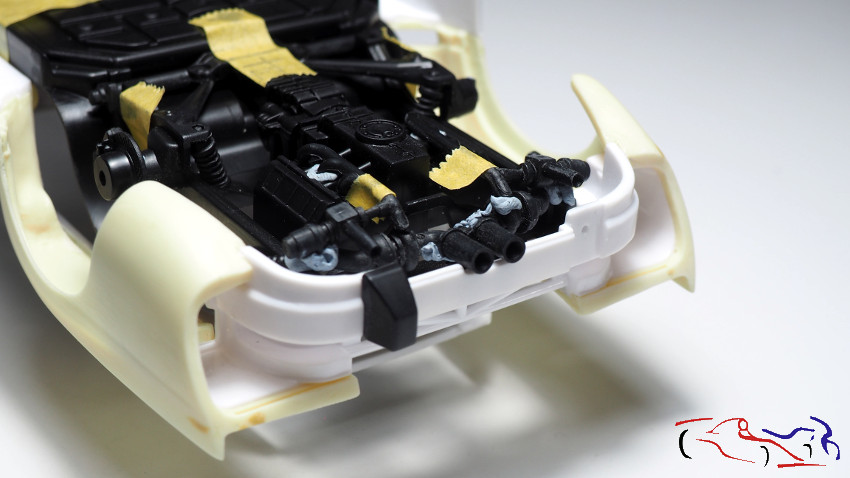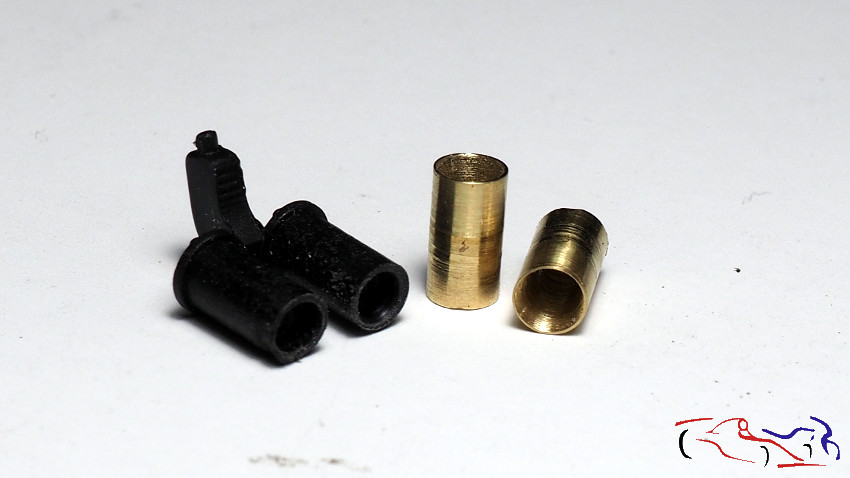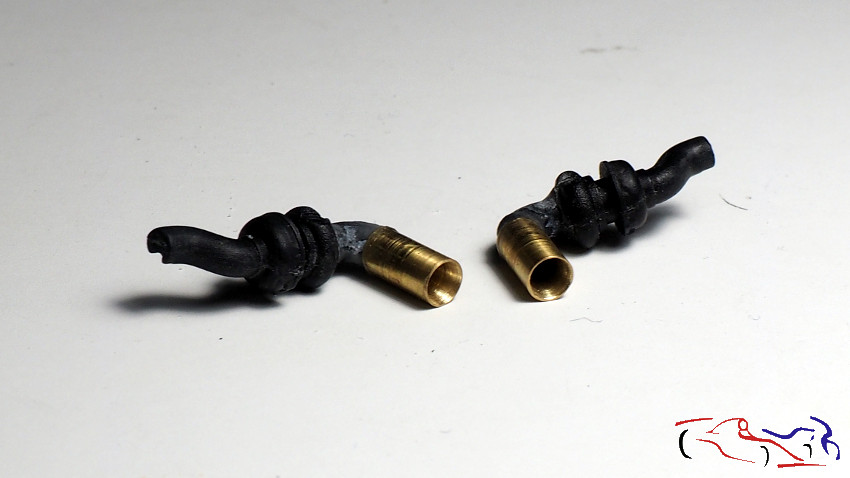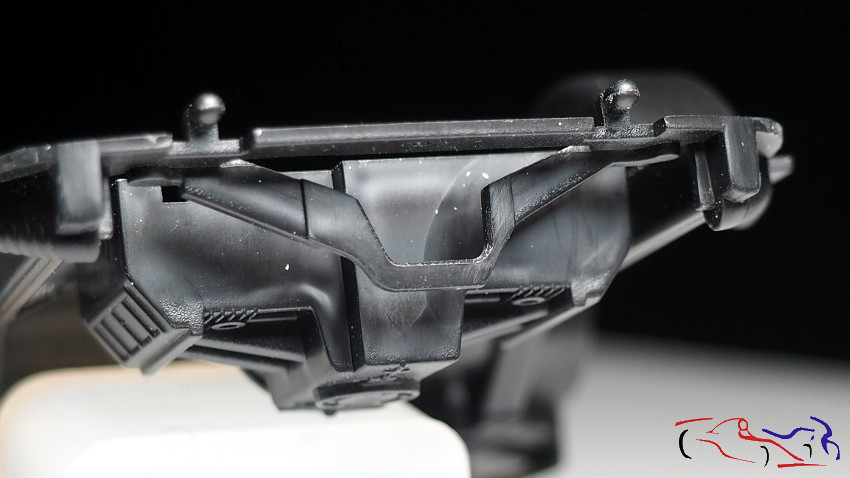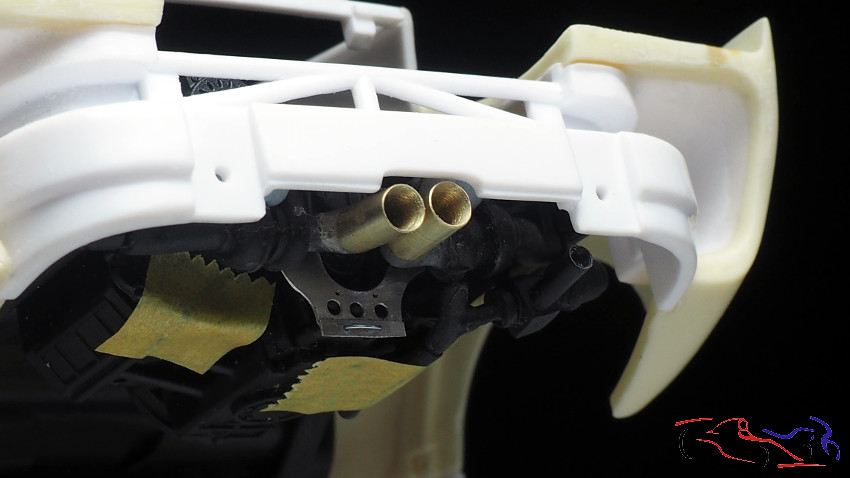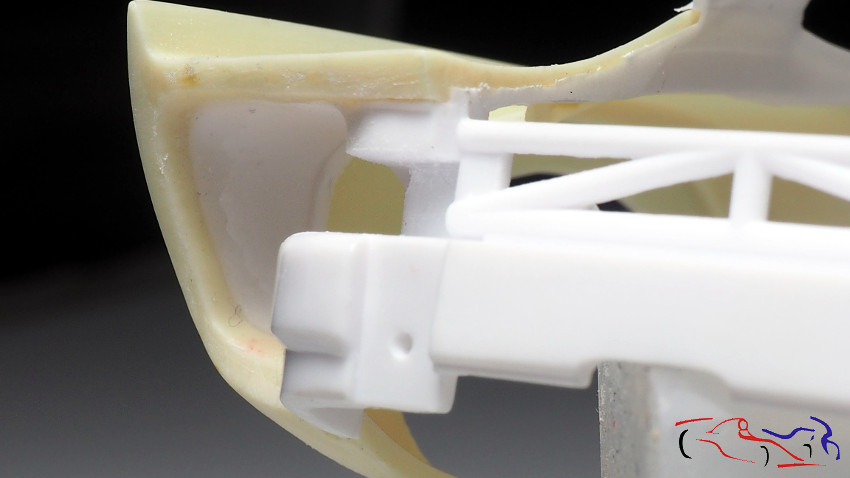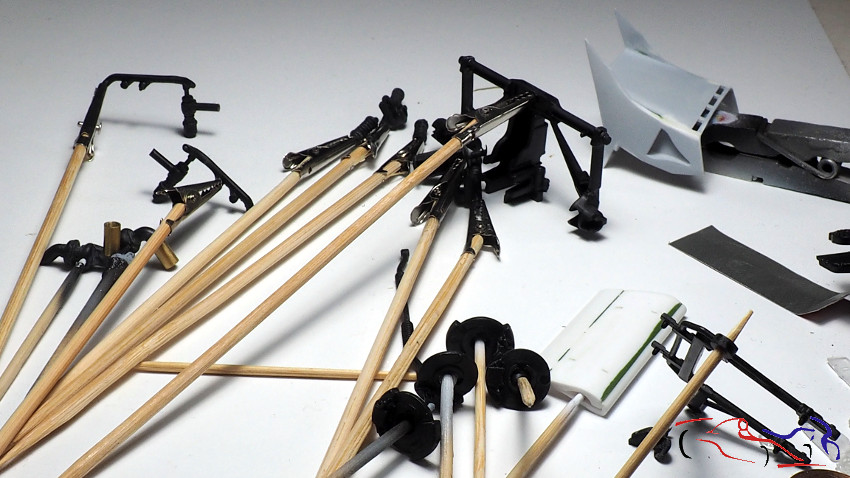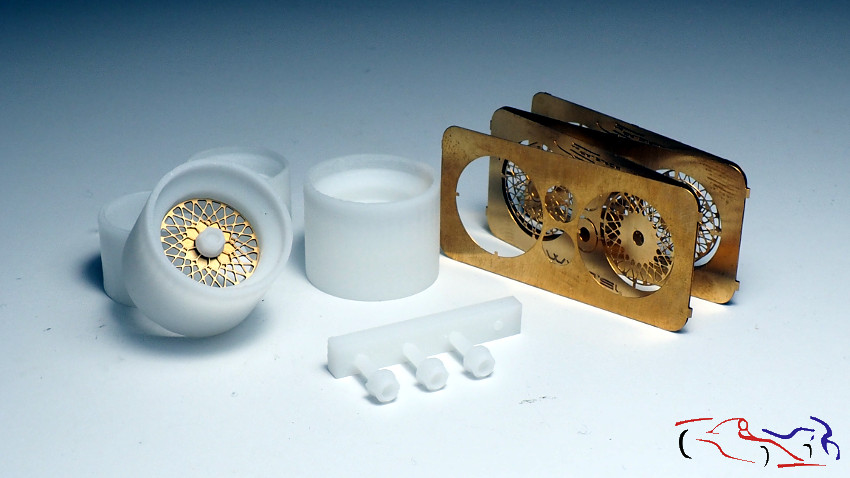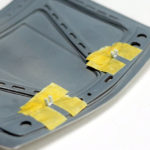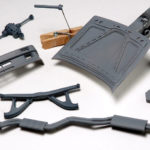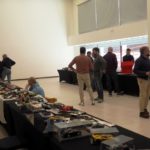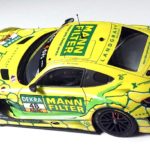Después del Lancia Delta S4, empiezo otro kit de la misma marca, Nunu, pero de circuitos, y también un icono del siglo pasado: Porsche 935 K3 a escala 1/24. En concreto, el que vienen en la decoración de la caja pertenece al vencedor de las 24 Horas de Le Mans del año 1979:
After the Lancia Delta S4, I start another kit from the same brand, Nunu, but for circuits, and also an icon of the last century: Porsche 935 K3 in 1/24 scale. Specifically, the one that comes in the decoration of the box belongs to the winner of the 24 Hours of Le Mans in 1979:
Pero yo voy a hacer otra decoración que me gustó mucho: la roja de Coca Cola. Y para eso, usaré las calcas de “Decalcas” que os muestro a continuación:
But I’m going to do another livery that I really liked: the red Coca Cola one. And for that, I will use the “Decalcas” decals that I show you below:
Viendo fotos del modelo real, me doy cuenta que en la aleta trasera izquierda, hay dos entradas de aire en lugar de una, por lo que voy a usar un transkit de “SK Decals” que contempla esas dos entradas, hecho en resina, se adapta muy bien y está muy bien hecho:
Looking at photos of the real model, I realize that in the left rear wing, there are two air intakes instead of one, so I’m going to use a transkit from “SK Decals” that contemplates those two intakes, made in resin, fits very well and is very well done:
Ahora os enseño la base del alerón trasero, que se situa encima del motor. Consta de 4 piezas que encajan bien, pero hay que añadir masilla y lijar para que todo sea una pieza sin los bordes de unión, como veremos un poco más delante. Ahora la pegamos ycolocamos en la carrocería para ver su encaje:
Now I show you the base of the rear wing, which sits on top of the engine. It consists of 4 pieces that fit well, but you have to add putty and sanding to make the whole piece without the edges of union, as we will see a little further on. Now we glue it and place it on the body to see how it fits:
Y vamos a ver el conjunto premontado, con las ruedas puestas. En principio no hay problemas aparentes, si acaso los agujeros de los de los bornes de unión de las piezas que, en general, convienen agrandar:
Let’s take a look at the pre-assembled, with the wheels on. In principle there are no apparent problems, except for the holes in the terminals for the connection of the parts which, in general, should be enlarged:
En la última foto, habéis visto el alerón trasero que viene en dos piezas, que hay que rellenar de putty un par de veces porque las líneas de unión resaltam notáblemente:
In the last picture, you have seen the rear wing that comes in two pieces, which need to be filled with putty a couple of times because the lines stand out noticeably:
A su vez, la base se ve un poco tosca, sobre todo las uniones con el alerón:
At the same time, the base looks a little rough, especially the joints with the spoiler:
Por eso, y fijándonos en las fotos del coche real, le eliminamos las propias fijaciones que irán en fotograbado y le afinamos las dos bases del alerón, como aparece en las fotografias siguientes:
For this reason, and looking at the photos of the real car, we have removed the actual fixings, which will be photo-etched, and refined the two bases of the spoiler, as shown in the following photographs:
AL igual que en el Porsche 936, le perfilamos las branquias delanteras (aquí tenemos en proceso la izquierda y la derecha en estado original):
As with the Porsche 936, we have outlined the front gills (here we have the left in progress and right is in the original state):
Y como en este kit, quería hacerle “algo diferente”, decidí que podía abrir la puerta con su bisagra activa. Y para eso, empecé a cortar la puerta con la parte posterior de un cutter. Un inconveniente era el pilar trasero que separa la puerta. Y para hacerlo, corté un trozo a medida de la cinta que se usaba antiguamente para etiquetar (el DIMO de toda la vida) como guía para el corte, tanto de la puerta como del cristal:
And since I wanted to do “something different” with this kit, I decided that I could open the door with its active hinge. And for that, I started cutting the door with the back of a cutter. One drawback was the rear pillar that separates the door. And to do this, I cut a piece of the tape used in the old days for labelling (the DIMO of all times) as a guide for cutting both the door and the glass:
Y aquí el resultado una vez separada toda la puerta de la carrocería:
And here is the result once the whole door has been separated from the bodywork:
A su vez, necesitamos cortar el panel interior para separar la parte que va unida a la puerta. Para ello ponemos el panel en su posición, lo montamos dentro de la carrocería, y marcamos el contorno interior de la puerta. Después cortamos de la misma manera.
In turn, we need to cut the inner panel to separate the part that is attached to the door. To do this, we put the panel in position, mount it inside the body, and mark the inner contour of the door. Then we cut it with the same process.
Para hacer la bisgra, después de varias opciones y pruebas, cojo tubo de cobre al que le inserto una varilla, y doblo por los extremos. Esta parte irá pegada en la puerta por la parte del tubo, para que la varilla se fije en el panel interior y pueda girar. Pero ahora, el problema en que todo tiene que ser fijado después de pintar y lacar, con lo que decido hacerle dos agujeros, poniendo dos casquillos donde pasaré y pegaré la varilla doblada de la bisagra. Se pueden ver esos dos casquillos en la foto de la derecha:
To make the hinge, after several options and test, I take a copper tube to which I insert a rod, and I bend the ends. This part will be glued to the inside door on the side of the tube, so that the rod is fixed to the inner panel and can rotate. But now, the problem is that everything has to be fixed after painting and lacquering, so I decide to make two holes, putting two sockets where I will pass and glue the bent rod of the hinge. You can see those two sockets in the picture on the right:
Y por supuesto, hay que realizar y adaptar el interior de la puerta. Para ello hacemos los perfiles y recortamos el interior del panel, de acuerdo con la forma que tiene:
And of course, the inside of the door has to be made and adapted. To do this, we make the profiles and cut out the inside of the panel, according to its shape:
Lo presentamos en la puerta y añadimos lámina de plastico por su perímerto interior. La pegamos con ciano y polvos de talco para asegurar la pieza:
We put it on the door adding a plastic film on the inside perimeter. We glue it with cyano and talcum powder to secure the piece:
Una vez seco, lijamos el sobrante enrasando el panel, y le añadimos piezas del interior como son un vástago que recorre la puerta, y una canalización para el sistema de apertura de la puerta, formada por una arandela y un tubito. En ese tubito irá la pieza que servirá para abrir la puerta.
Once dry, we sand the excess to make the panel flush, and we add interior parts such as a rod that runs along the door, and a channel for the door opening system, formed by a washer and a small tube. The piece that will be used to open the door will be placed in this small tube.
Y este es el resultado (sin pegar el panel de la puerta. Vemos la bisagra lista para ponerse en la carrocería. Para pegarla, ya que es perpendicular al suelo y paralela al panel (la puerta no es vertical), pongo la bisagra en la carrocería, pongo ciano en la puerta y la coloco en su lugar. Una vez seco, solo estará pegado la parte de abajo, más cercana a la puerta, y para segurar el resto, lo rellenos con ciano y polvos de talco. Al secarse, lo rebajo con el minitaladro.
And this is the result (without gluing the door panel). We can see the hinge ready to be put on the bodywork. To glue it, as it is perpendicular to the floor and parallel to the panel (the door is not vertical), I put the hinge on the body, put some cyano on the door and put it in place. Once dry, only the bottom part, closest to the door, will be glued, and to secure the rest, I fill it with cyano and talcum powder. When it dries, I then cut it down with the mini-drill.
Más procesos que tiene el abrir una puerta: adaptar la carrocería, añadiendo un marco y rellenar lo huecos. Vemos el marco superpuesto, a continuación, ya fijado con el hueco de la aleta trasera tapado, y una tercera foto más cercana. Hay que afinar esa pieza aun!:
More processes involved in opening a door: adapting the body, adding a frame and filling in the gaps. We see the overlapping frame, below, already fixed with the rear wing gap plugged, and a third, closer photo (That part still needs to be tuned!):
Pasamos a la parte del motor. Lo montamos todo para ver como queda y lo que hace falta:
We move on to the engine part. We put it all together to see how it looks and what is needed:
Y vemos que la pieza de los escapes deja mucho que desear, por lo que la sustituiremos con tubos de latón, que los pondremos en el minitaladro para adelgazar el ancho del tubo:
And we can see that the exhaust piece leaves a lot to be desired, so we will replace it with brass tubes, which we will put in the mini drill to thin the width of the tube:
Y los unimos a la salida de ambos turbos, poniendo en la unión, ciano con polvos de talco. Lijamos para dar continuidad a la pieza:
And we join them at the outlet of both turbos, putting in the union, cyano with talcum powder. We sand to give continuity to the piece:
Más detalles: la pieza negra con forma de “U”, además de ser más fina, tiene una forma distinta:
More details: the black U-shaped piece, besides being thinner, has a different shape:
Por lo que la eliminamos y ponemos una pieza de metal, con tres agujeros y forma más real. La vemos detrás d l os tubos de escape modificados anteriormente y superpuestos para la foto:
So we removed it and put a metal piece, with three holes and a more realistic shape. We can see it behind the exhaust pipes modified before and superimposed for the photo:
Más tareas de la parte trasera: rellenamos las uniones de la carrocería con las piezas de resina con ciano y polvos de talco, que después lijamos para igualar las superficies. Decir que este no es un problema de l TK ya que habría que hacer lo mismo con las piezas originales de plástico.
More work on the rear: we filled the body joints with the resin parts with cyano and talcum powder, which we then sanded to even out the surfaces. It should be noted that this is not a problem for the TK, as the same would have to be done with the original plastic parts.
Y bueno….muchas piezas listas para imprimar y pintar!!
And well…. lots of parts ready to prime and paint!!!
Y para terminar, os muestro el TK de ruedas de “Scalelab24” que voy a usar en este montaje, que son las que originalemente llevaba con esa decoración:
And finally, I show you the TK wheels from “Scalelab24” that I’m going to use in this assembly, which are the ones the car originally wore with this decoration:
Gracias por mirar y comentar!!
Thanks for watching and commenting!

